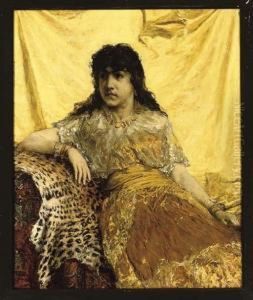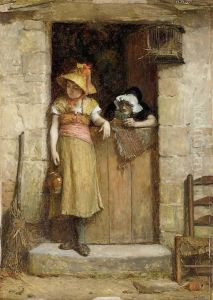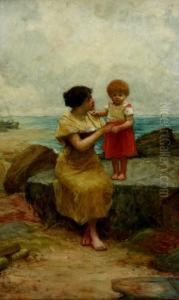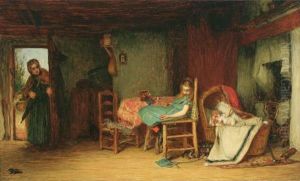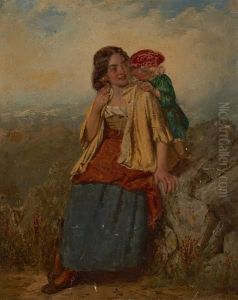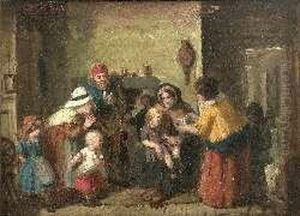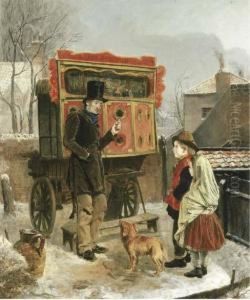John P. Burr Paintings
John Pettie Burr, often known as J.P. Burr, was a British painter of the Victorian era, known for his genre and historical paintings. Born on March 1, 1831, in Edinburgh, Scotland, Burr showed an early interest in art. He studied at the Trustees’ Academy in Edinburgh, where he was influenced by the work of Sir William Allan and Thomas Duncan, both of whom were prominent Scottish historical painters.
Burr moved to London in 1858 and became associated with the Pre-Raphaelite Brotherhood, a group of English painters, poets, and art critics, founded in 1848 by William Holman Hunt, John Everett Millais, and Dante Gabriel Rossetti. While Burr was not an official member of the Brotherhood, its principles influenced his work. He was known for his meticulous approach to painting, focusing on historical accuracy and elaborate detail, similar to the Pre-Raphaelite emphasis on precision and truth to nature.
Throughout his career, J.P. Burr exhibited at the Royal Academy and other venues, becoming quite successful and well-respected in his time. Some of his notable works include 'The Glorious Charge of the Scots Greys at Waterloo' and 'Brave Hearts'. His paintings often depicted moments of heroism and chivalry, with a vibrant use of color and dramatic lighting, which made them popular with Victorian audiences.
Burr was also a member of the Royal Academy of Arts and the Royal Scottish Academy. Despite his association with London, he maintained strong ties to his Scottish roots and often returned to Scotland throughout his life. His works continue to be appreciated for their historical value and artistic merit.
John Pettie Burr passed away on February 21, 1893, in London. His legacy continues to be studied by art historians and his paintings are featured in various collections, including those of major museums and galleries across the United Kingdom.







